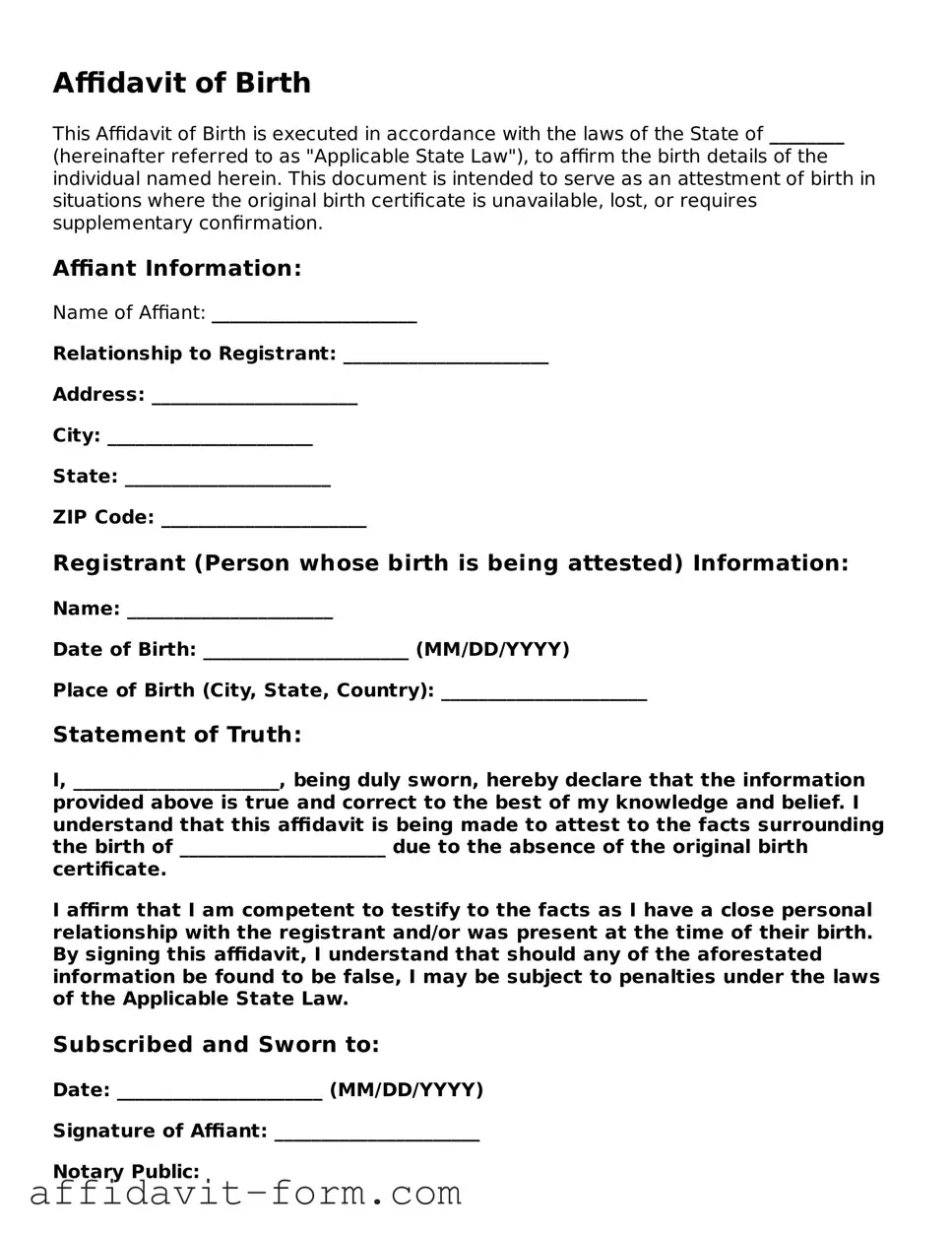Affidavit of Birth
This Affidavit of Birth is executed in accordance with the laws of the State of ________ (hereinafter referred to as "Applicable State Law"), to affirm the birth details of the individual named herein. This document is intended to serve as an attestment of birth in situations where the original birth certificate is unavailable, lost, or requires supplementary confirmation.
Affiant Information:
Name of Affiant: ______________________
Relationship to Registrant: ______________________
Address: ______________________
City: ______________________
State: ______________________
ZIP Code: ______________________
Registrant (Person whose birth is being attested) Information:
Name: ______________________
Date of Birth: ______________________ (MM/DD/YYYY)
Place of Birth (City, State, Country): ______________________
Statement of Truth:
I, ______________________, being duly sworn, hereby declare that the information provided above is true and correct to the best of my knowledge and belief. I understand that this affidavit is being made to attest to the facts surrounding the birth of ______________________ due to the absence of the original birth certificate.
I affirm that I am competent to testify to the facts as I have a close personal relationship with the registrant and/or was present at the time of their birth. By signing this affidavit, I understand that should any of the aforestated information be found to be false, I may be subject to penalties under the laws of the Applicable State Law.
Subscribed and Sworn to:
Date: ______________________ (MM/DD/YYYY)
Signature of Affiant: ______________________
Notary Public:
Name: ______________________
Commission Number: ______________________
My Commission Expires: ______________________ (MM/DD/YYYY)
This document was notarized in the State of ________, adhering strictly to the codes and requirements as prescribed under the Applicable State Law.
Instructions for Completing This Affidavit:
- Fill in the blanks with the correct information pertaining to the Affiant (the person making the affidavit) and the Registrant (the person whose birth is being attested).
- Ensure that all the details provided are accurate and true.
- Sign and date the affidavit in the presence of a Notary Public.
- The Notary Public will validate the identity of the affiant and complete the notarization process.
Note: This affidavit may be used for legal purposes where a birth certificate is required but not available. However, it is advisable to consult with a legal advisor or the relevant authorities in your state to ensure compliance with all applicable laws and regulations.
